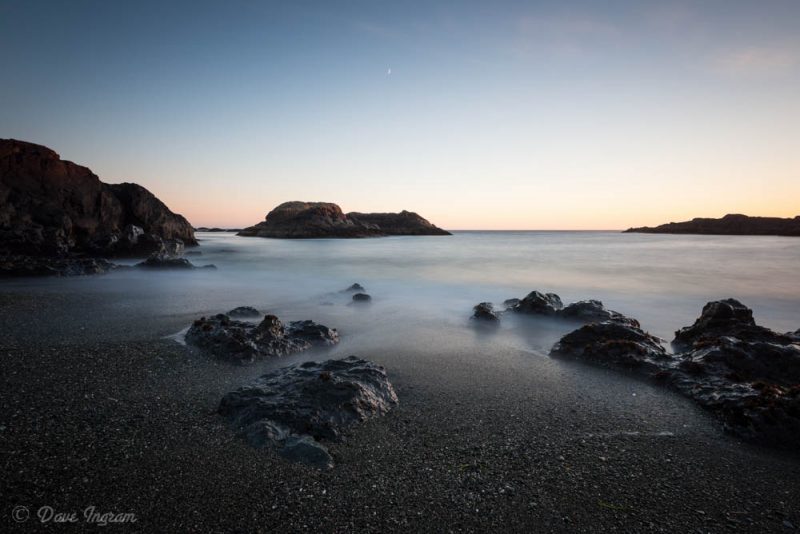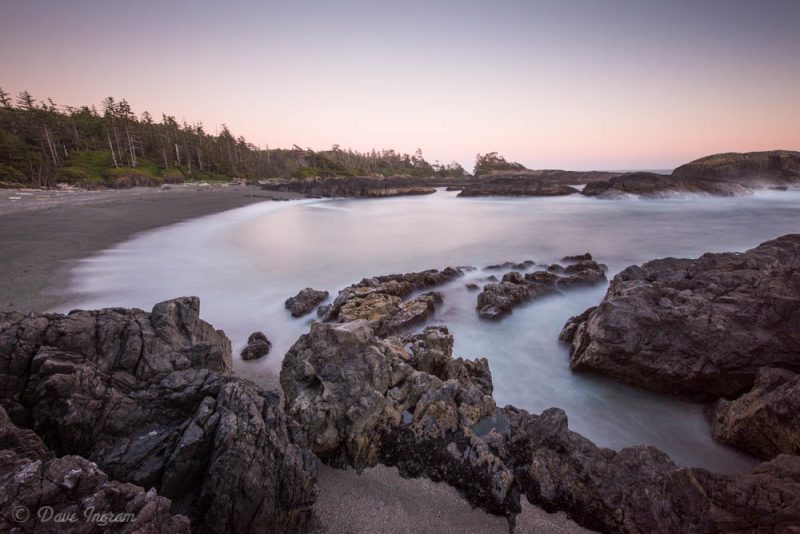I’m not sure why more people don’t visit South Beach in Pacific Rim National Park Reserve—it might be that I’m usually out there off peak hours, but this summer I’ve rarely seen more than a half-dozen people walking the curve of gravel beach each time. It is a relatively easy 800m (about 15-20 minute) walk from the parking area but on the map it does look a bit longer.
That being said, it’s well worth the “effort.”

ISO 100, f/8.0, 30 seconds – Nikon D600
The curve and size of the beach makes for good compositions and at a low tide interesting rock formations emerge at either end of the beach. Over the last couple of weeks I’ve been out at South Beach several times at sunset playing around with a B+W 10 stop ND filter and my 16-35mm lens.

ISO 200, f/8.0, 30 seconds – Nikon D600
It’s been a process of trial and error to get the exposure and composition right. Because the 10-stop ND filter is so dark, it’s impossible to see anything and recomposing requires taking the filter off, changing the position of the camera, focusing, switching the autofocus off (so the camera doesn’t try to refocus), putting the filter back on, taking an initial image (often at the slowest shutter speed of 30 seconds on the Nikon D600), checking the exposure and then adjusting the aperture and shutter speed manually to get it right. Repeat. The D600 has a little cap to prevent light leaking in through the viewfinder during long exposures, but it’s too fiddly to use—I just drape a piece of dark cloth over the back of the camera.

ISO 400, f/8.0, 59 seconds – Nikon D600
Sunset/twilight is a good time to photograph South Beach. You don’t get a dramatic sun descending into the ocean and the effect is subtle with a wash of rich colour in the evening sky.
In addition to creating some interesting photographs, the slow process of making the photograph at twilight really gives you time to appreciate the dramatic landscape while you’re waiting for that minute long exposure to complete. Slowing down is a good thing.
These images and more available as prints at http://DaveIngram.ca
Need To Know:
- Check the tides – low tide is probably the best time to photograph the beach since the rocks along the edges will be exposed. Both ends of the beach have interesting rock formations that work well to anchor compositions.
- Be aware of what the water is doing and always set up in a safe location
- A Neutral Density filter, tripod, and a long exposure is required to get that dreamy look to the water.
- Good idea to bring a flashlight and a buddy with you if possible—it’s a dark walk back to the parking area after sunset.
- If the tide is still low on your way out make sure to check the sandy beach and rocky island in front of the Kwisitis Visitor Centre on Wickaninnish Beach—very good opportunities here well after the sun has set.
- You need to have a Pacific Rim National Park Reserve park use permit displayed in your vehicle, parking area closes at 11 pm